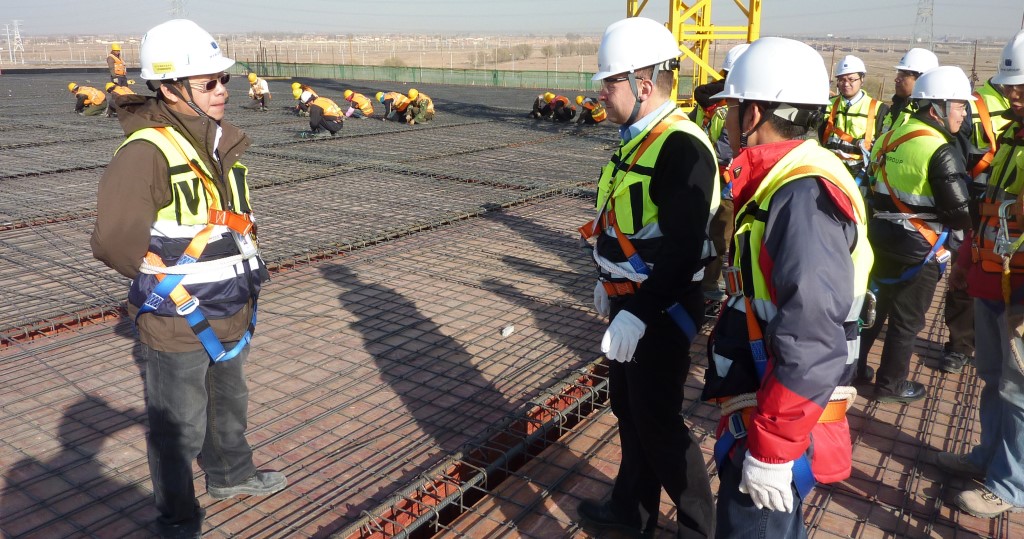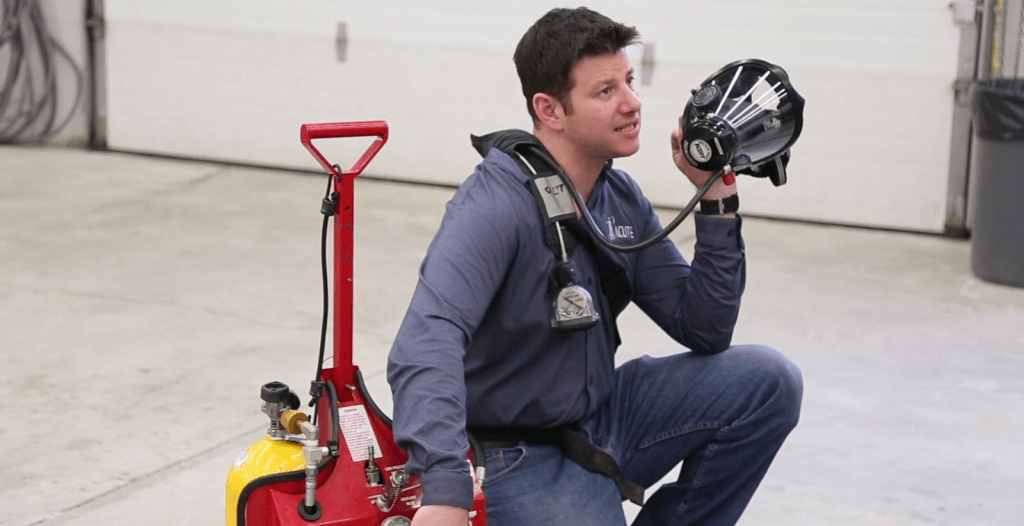Here are the top Ontario workplace safety tips to keep you safe and healthy no matter where you work.
- Ontario Workplace Safety Tips Concerning Ergonomics
- Ontario Workplace Safety Tips Concerning Illnesses
- Ontario Workplace Safety Tips Concerning Personal Protective Equipment
- Ontario Workplace Safety Tips Concerning Workplace Violence and Harassment
If you require workplace health and safety training or consulting, contact us.

Ontario workplace safety tips: learn how to stay safe
1. Ontario Workplace Safety Tips Concerning Ergonomics
Ergonomic hazards need to be taken as seriously as other workplace hazards. Employers in Ontario are legally required to protect their employees from hazards caused by poor ergonomics.
The following are general guidelines and tips for making sure that your workplace is ergonomically safe.
Make sure that all of your equipment is in good condition
Equipment that is not in good condition can cause musculoskeletal disorders (MSD) such as carpal tunnel or tendonitis. The following are some examples of how poorly maintained equipment can be an ergonomic hazard:
- A misaligned wheel on a cart can increase the push and pull forces required to move it thus putting unnecessary strain on an employee’s body
- Seats on vehicles that have damaged padding can increase the amount of whole-body vibration on the driver
- Broken height adjustment features on equipment can cause workers to operate in awkward postures

Ontario workplace safety tips: a worn seat can be an ergonomic hazard
Make sure that your employees have proper instruction, supervision, and information to keep them safe
Employers need to make sure that their employees have proper health and safety instruction, supervision, and information. This could include:
- Knowing safe work methods specific to your workplace
- Techniques for properly lifting, pushing, and pulling materials
- Computer ergonomics
- How to recognize the signs of MSD and reduce the risks of MSD
Make sure that your supervisors are aware of any hazards in the workplace
Supervisors have a responsibility to keep their workers safe. They need to:
- Make sure that employees are doing their job in a safe manner
- Make sure that job rotation is being carried out effectively
- Make decisions that will keep their workers safe

Supervisors are responsible for ensuring all workers are safe on the job
Take necessary precautions to protect your workers
Legally speaking, employers need to make sure that they are taking appropriate precautions to protect their workers, including:
- Make sure that the whole-body vibration levels experienced by your employees are within acceptable ranges.
- Make sure that your workers are not having contact stress
- Make sure that your workers are not experiencing overexposure to ergonomic hazards such as excessive force, fixed or awkward positions, or excessive repetition
Perform regular inspections
If there are more than 5 workers at your workplace then a health and safety representative or a member of your joint health and safety committee needs to inspect the physical state of your workplace at least once a month. During this inspection, any hazards should be identified and addressed.

You need to perform regular inspections
2. Ontario Workplace Safety Tips Concerning Illnesses
Stay home if you are sick:
In Ontario, most employees are legally allowed to take up to 3 days of unpaid job-protected sick leave each year and up to 3 days of unpaid job-protected leave if you need to look after a family member who is sick.
Wash your hands:
Frequent hand washing can help keep you healthy. Here are the steps to follow to help prevent the spread of diseases in your workplace:
- Wet your hands with warm water and then apply soap to them.
- Wash your hands for at least 20 seconds. Make sure to wash your palms as well as the back of your hands, between your fingers, thumbs, and under your nails.
- Rinse your hands well.
- Dry them off with a paper towel and use that towel to turn off the tap.

Ontario workplace safety tips: wash your hands frequently
3. Ontario Workplace Safety Tips Concerning Personal Protective Equipment
Employers are required to provide proper personal protective equipment to their employees if their jobs present any health and safety risks that can’t be controlled in another way. Types of personal protective equipment can include:
- Respirators
- Hearing protection
- Protective clothing
- Protective footwear
- Face shields
- Protective eyewear

Ontario workplace safety tips: wear the proper personal protective equipment
4. Ontario Workplace Safety Tips Concerning Workplace Violence and Harassment
Every employee is entitled to feel safe and healthy in the workplace. Your employer is required by law to prepare a workplace harassment policy to ensure your safety in the workplace. Examples of workplace harassment include:
- Sexual harassment
- Bullying or any other aggressive behaviour
- Inappropriate staring
- Making fun of you because of gender identity
- Offensive or intimidating comments or jokes
- Circulating offensive pictures or other written materials
Make sure that you are aware of your workplace harassment policy and follow the procedures outlined to report and stop any of the above offences.

Report any workplace harassment that occurs
Need Workplace Safety Training? Contact ACUTE
You can trust ACUTE for the best workplace safety training possible. ACUTE’s experienced team members have been serving safety professionals for over 20 years. You can rely on ACUTE for hands-on, physically distanced, practical safety training to keep your employees safe in the workplace. ACUTE is dedicated to workplace safety and understands the importance of course and training provider approval. Why get workplace safety training with ACUTE? Here are just some of the benefits of working with ACUTE:

- Open Door Instructor-Student Partnership – ACUTE’s training services emphasize client participation. Staff foster relationships with clients and serve as a touchstone for advice anytime moving forward.
- Serving Your Team and Industry – With a vast array of clients in the manufacturing, construction, health, academic, and government sectors, ACUTE brings the best safety practices from across the spectrum to your workplace.
- 100 Years Combined Experience – ACUTE provides comprehensive health and safety training, on-site safety services, and consulting services. With over 100 years of combined experience, our company staff offer more than theoretical or abstract ideas. ACUTE offers solutions.
- Track Record of Success – ACUTE is rated 4.9/5 stars on Google reviews, demonstrating a commitment to our clients, quality, and passion for training.
Check out our course calendar for times and dates of our courses.
What Our Customers Are Saying…
“I work at the University of Guelph as an arborist. Ron Campbell provided a small socially distanced group and myself with working at heights training. Ron has a wealth of knowledge and kept everyone engaged with many “real life” examples of working at heights scenarios and facts. We have also received elevated work platform training with Patrick from Acute training. Patrick is also a very friendly, knowledgeable and engaging professional trainer. I truly believe that the best trainers are those with practical experience and the trainers at Acute have that locked down.”

